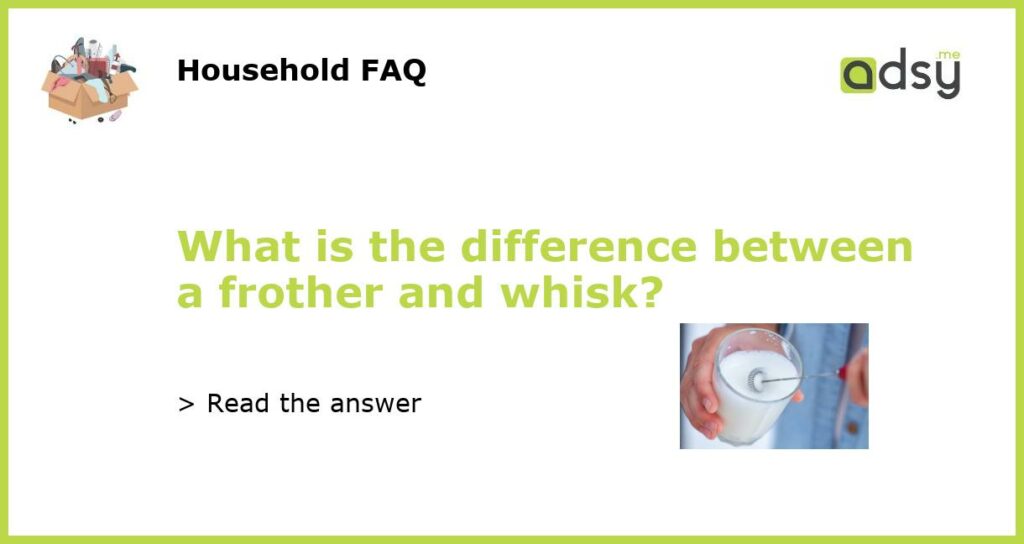Frother vs Whisk: What’s the Difference?
Frothers and whisks are often used in the kitchen to mix ingredients and create a smooth texture. But what sets them apart from each other? Let’s take a closer look at the differences between a frother and a whisk.
What is a Frother?
A frother, or milk frother, is a device used to create a frothy texture in milk. It is often used to make cappuccinos, lattes, and other coffee drinks. Frothers are typically handheld devices that use a whisk to froth the milk. They can be manual or battery-powered and come in a variety of sizes and designs, including spiral, spade, and bullet.
What is a Whisk?
A whisk is a kitchen tool used for mixing and beating ingredients. It is typically made of stainless steel wires that are curved into a shape resembling a balloon. Whisks come in different sizes, ranging from small, handheld whisks to large, industrial-sized ones. They are commonly used in baking to mix dry ingredients, beat eggs, and whip cream.
Differences Between Frother and Whisk
While both frothers and whisks are designed to mix ingredients, they have some key differences. Frothers are typically used to create a frothy texture in liquid, whereas whisks are used to mix and beat dry and wet ingredients. Frothers also tend to be smaller and more specialized in their function, while whisks come in a variety of sizes and are used for a wider range of tasks.
When to Use a Frother vs Whisk
Knowing the differences between a frother and a whisk can help you determine when to use each tool. If you want to create a frothy texture in milk, then a frother is the way to go. However, if you need to mix ingredients, such as beating eggs or whipping cream, then a whisk is the better choice. Ultimately, it depends on the task at hand and the desired outcome.






